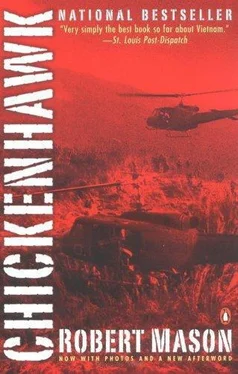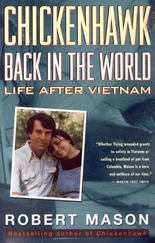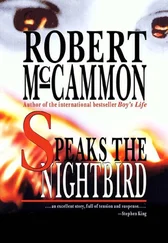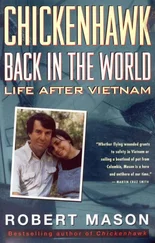“It says here that you failed to show any sort of enthusiasm in the leadership drills. Your instructors say you weren’t interested in participating seriously when you were selected to be the student company commander.”
And then I talked. I can’t remember exactly what I said, but I said it calmly and rationally, opposite from the way I felt. I told them I was just out of basic and inexperienced. I was very serious about getting through this school, but I might not have shown it. I had been flying since I was seventeen. “I want to be a helicopter pilot,” I said. “I’ve studied for that, and I think my grades from ground school prove it. When I’m out there someday flying soldiers around, I expect to be one of the best pilots that ever came out of this school. Won’t you give me that chance?” I went on for five minutes.
The stenographer nodded that the words were down. The major made a mark in my folder. “Wait in the company area until you hear from us.”
I waited with packed duffel bags, watching my classmates avoid me and the other washouts. When a runner from the office called my name, I jumped out of my skin. I burst through the door at the student company headquarters, came to attention, and screamed, “Candidate Mason reporting as ordered, Sergeant!”
Malone only looked at my feet and screamed, “You missed the white line, candidate! Go out and try again.”
I about-faced, went outside, and tried again to hit the painted white line in front of Malone’s desk with just the tips of my boots, without looking down. After two more attempts, I succeeded. Malone swaggered menacingly up to me, coming in from the side. My eyes were glued to the wall in front of me. Malone talked into my ear.
“It pains me to tell you, candidate, that the elimination board, in its infinite wisdom, has decided to reinstate your ass.”
I turned, grinning at the news.
“Eyes front, candidate!” My head snapped to the front. “Yes, they have decided to reinstate you, over my violent objections, I might add. So get your lucky ass out of here and go join your classmates. Git!”
I turned and ran out the door, laughing all the way back to the barracks. I called Patience and told her to come.
The next morning, I was called back to the office. The board’s decision to reinstate me had ruined the student-instructor ratio at the flight line. Malone grinned. “So, Candidate Mason, you will be starting preflight all over again with the next class. Maybe this time I’ll see you eliminated.”
The second time through preflight was much easier. I had already taken all the classes, so I scored terrific grades on every test. I had learned to play the leadership game with great zeal. I became the almost perfect preflight candidate, but Malone said, “You’ve had plenty of practice, Candidate Mason.”
Two months after I had driven through the main gates, I finally got to the flight line. We were issued flight suits, flight helmets, flight gloves, sunglasses, Jeppson course plotters, wind-face computers, and new textbooks. We were told to wear our hats backward on the flight line, the traditional mark of the unsoloed pilot candidate. We still ran everywhere else, but we were driven to the flight line. We were starting the real business of this school.
We marched into a low building adjacent to the main heliport and sat at gray tables, four candidates to a table. The flight leader gave us a brief talk and then the IPs (instructor pilots) came into the room. IPs were mythical beings whom we held in the highest respect. They were civilians. We had heard a hundred stories about their training methods, their short tempers, and how they liked to get rid of students so they would have a lighter load. They strode through the door wearing the same gray flight suits we wore, a kind of mechanic’s coverall with a crotch-to-neck zipper and a dozen pockets all over it. The IPs had something sticking out of each pocket. We knew they were privileged by how sloppy they were.
The IP who came to our table would take the four of us on our orientation flight, the only “free ride” in the course. We had been preparing for this day by studying helicopter controls and basic flight maneuvers. Many of us felt we could fly in an hour or so.
I had spent many evenings in my room reviewing the flight controls, what they did, and how I would have to move my hands and feet. I could hear the ground school’s aerodynamics instructor in my head. “The names of the controls in a helicopter refer to their effect on the rotating wings and the tail rotor,” the voice would say. “The disk formed by the rotor blades is what really flies. The rest of the fuselage simply follows along suspended from the disk by the mast.” In my chair I formed a strong mental image of this disk spinning over my head. Then I would start to review the controls. “The collective control stick is located on the left side of the pilot’s seat. Pulling it up increases the pitch angle of both main rotor blades at the same time, collectively, causing the disk, and the helicopter, to rise. Lowering the collective reduces the pitch, and the disk descends. The throttle twist grip on the end of the collective stick has to be coordinated with the up and down movements. You must twist in more throttle as you raise the collective, and roll it off as you lower it.” I raised and lowered my left hand by my side, twisting it from side to side as I did.
“The cyclic control stick rises vertically from the cockpit floor between the pilot’s legs. Moving the cyclic stick in any horizontal direction causes the rotating wings to increase their pitch and move higher on one half of their cycle while feathering on the other half. This cyclic change of pitch causes the disk they form to tilt and move in the same direction as the cyclic stick is pushed.” Now, along with my left hand moving up and down and twisting, my right hand moved in small circles above my knees as, in my mind, I flew.
“The force that rotates the main rotor system clockwise as seen from the cockpit also tries to rotate the fuselage under it in the opposite direction. This effect is known as torque. The way it is controlled is with the an titorque rotor, the tail rotor located at the end of the tail boom. When it is spinning, it pushes the tail sideways against the torque. The amount of push, and therefore the direction the nose points, is controlled by pushing the foot pedals. Pushing the left pedal increases the tail rotor pitch, which pushes the tail to the right, against the torque, moving the nose to the left. The right pedal reduces the pitch and allows the torque to move the nose to the right. Because this left-and-right turning requires more and less power, you will have to adjust the throttle accordingly to maintain the proper engine and rotor rpm. Got that?”
I thought I did. I moved my left hand up and down, twisting it, to control the imaginary collective and throttle; my right hand moved in small circles, pretending to control a cyclic; my feet controlled the tail rotor by pumping back and forth. Eventually I could do all these movements simultaneously. These exercises and the fact that I already had a fixed-wing pilot’s license gave rise to the fantasy that I would be able to fly a helicopter on the first try.
“Okay. See that tree out there?” The orientation instructor’s gravelly voice hissed in my earphones. I was finally getting my chance. The instructor held the H-23 Hiller trainer in a hover in the middle of a ten-acre field.
“Yes, sir,” I said, squeezing the intercom switch on the cyclic stick.
“Well, I’m gonna take care of the rest of the controls, and all I want you to do is to keep this bird pointed in the direction of that tree.” He jutted his chin forward. I nodded. “You got that?”
Читать дальше












